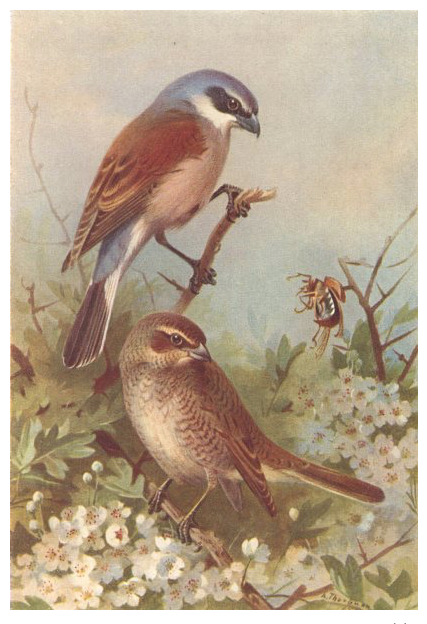Red-backed shrikes (Lanius collurio) used to nest fairly widely in this country but are now rare passage migrants in spring and autumn. This juvenile is very late heading south in December.
Although they are red-listed in the UK red-backed shrikes nest throughout the rest of Europe and winter in Africa. They are small - slightly larger than sparrows - and eat mainly beetles and other insects.
The red-backed shrike is too rare for the BTO to produce population trends. This map from the BTO Bird Atlas Map Store shows the breeding distribution 50 years ago.
This is the population decline since then.
And this is the breeding distribution in the latest 2008-2011 atlas. I think the large circles represent single breeding attempts but are widened out so as not to give precise location information for security reasons. The black dots, mainly down the east coast, show all the birds recorded in four years and show how rare they are.
Thomas Bewick doesn't mention numbers but I get the impression that the red-backed shrike was a reasonably common bird in his day. This is his illustration of an adult male for A History of British Birds (1797).
Archibald Thorburn painted red-backed shrikes several times. Here are male and female adults.
This shows a great grey shrike (L) as well as a pair of red-backed shrikes.
ID composite Red-backed Shrike from the Crossley ID Guide Britain and Ireland. Wikimedia Commons CC-BY-SA-3.0.
You can listed to the BBC Radio 4 Tweet of the Day here.


















No comments:
Post a Comment